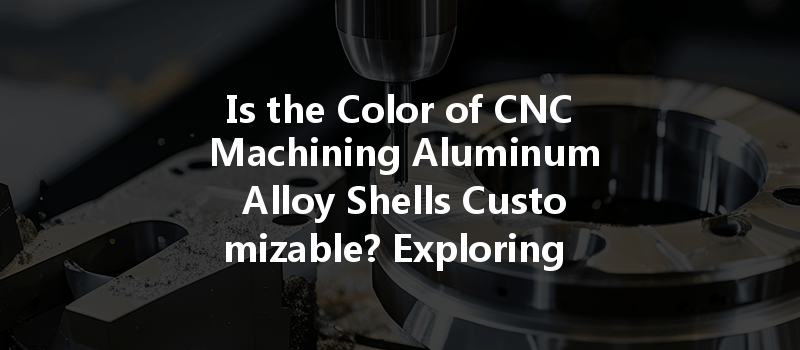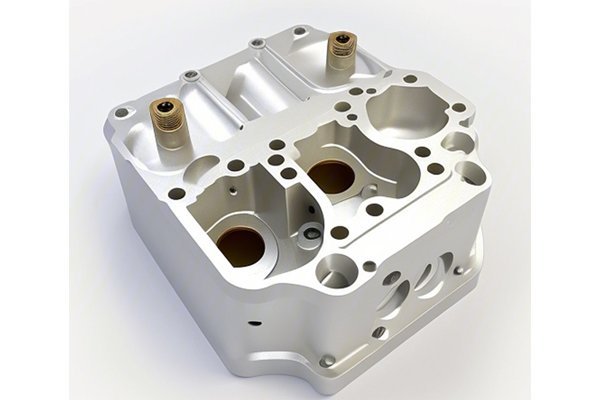Did you know that the global CNC machining market is expected to grow from $60 billion in 2020 to over $100 billion by 2027? This exponential growth hints at the versatility and innovation within this manufacturing sector. One particularly captivating aspect of CNC (Computer Numerical Control) machining is the ability to customize products according to specific customer needs, including the color of aluminum alloy shells. In this article, we’ll dive deep into the various processes that allow for color customization in CNC machining, exploring techniques, benefits, challenges, and practical solutions for businesses seeking tailored solutions.
Understanding CNC Machining
Before we delve into color customization, it’s essential to recognize what CNC machining entails. CNC machining is a subtractive manufacturing process that uses computer-controlled machines to create precise components from various materials, including metals and plastics. The process involves the following key steps:
The Case for Customization
Customization is no longer just a luxury; it’s a necessity for industries looking to stand out in a crowded marketplace. From improving brand recognition to enhancing product function, the ability to customize the color of CNC machined components can considerably impact a company’s bottom line.
Appearance
Color adds aesthetic value to a product. For industries like consumer electronics, automotive, and furniture, color can influence purchasing decisions. A customizable color palette allows businesses to meet customer requests and align with branding strategies.
Functionality
In some cases, color can enhance functionality. For instance, certain coatings can improve visibility or even temperature readings. Custom colors can send visual signals—like warnings or alerts—which can be crucial in safety applications.
Color Customization Techniques
Let’s explore several popular techniques for achieving color customization in CNC machining:
What It Is: Anodizing is an electrochemical process that converts the surface of aluminum into a durable, corrosion-resistant oxide layer. This process opens opportunities for color customization since the oxide layer can be dyed in a range of colors.
Benefits:
Drawbacks:
What It Is: Powder coating is a finishing process that involves applying dry powder to the surface of parts and then curing them under heat. The result is a hard, protective finish available in virtually any RAL or Pantone color.
Benefits:
Drawbacks:
What It Is: Traditional painting techniques can be employed to achieve desired colors on CNC machined aluminum components.
Benefits:

Drawbacks:
What It Is: Laser engraving uses high-powered lasers to remove material from the surface of the part, creating a color contrast based on the depth of engraving.
Benefits:
Drawbacks:
Factors to Consider for Color Customization
When deciding on a method for color customization, several practical factors must be considered:
Different applications demand varying performance levels and appearances. For example, aerospace may prioritize durability, while consumer products might focus more on aesthetic appeal. Therefore, understanding the end-use is vital in determining the best method for customization.
Costs can vary widely based on the customization technique used. Businesses should conduct a cost-benefit analysis to assess which techniques fit their budget while still meeting quality requirements.
Production schedules can also influence the chosen method. Some techniques may require longer processing times, impacting project timelines. Companies must balance quality and time efficiency.
As corporations grow more aware of their environmental responsibilities, selecting a method that aligns with sustainability practices becomes increasingly significant. Options such as powder coating may be more appealing due to their lower emissions.
Practical Solutions for Businesses
With many choices, businesses might find themselves unsure of which direction to take. Here are some targeted solutions to help tackle common challenges associated with color customization in CNC machining:
Form partnerships with experienced suppliers who understand the nuances of color customization. Suppliers can provide valuable insights into the best techniques suited for your applications and offer guidance on cost implications.
Before committing to any color method, companies could create prototypes. Testing different techniques through pilot runs can reveal potential challenges and successes in achieving color customization.
Inviting customers into the decision-making process can yield useful insights. Customer preferences should inform design choices from the onset, ensuring that the final product aligns with market demands.
Remain open-minded and flexible in your approach to color customization. A technique that works well for one project may not be the best option for another due to variations in material, design, or application.
Color customization in CNC machining aluminum alloy shells is a powerful method for enhancing both aesthetics and functionality. As we’ve explored throughout this article, various techniques like anodizing, powder coating, painting, and laser engraving each offer unique advantages and considerations. Businesses looking to differentiate themselves must evaluate the application, cost implications, and environmental impact when selecting a method.
In an ever-competitive market, staying ahead means understanding not only the mechanics of machining but also how to adapt to consumer needs effectively. So whether you’re in the initial stages of product development or a seasoned manufacturer, the insights provided in this blog can help you harness the benefits of color customization.
By embracing these techniques, companies can elevate their product offerings, thus promoting brand recognition and ensuring customer satisfaction in a market that demands innovation.






